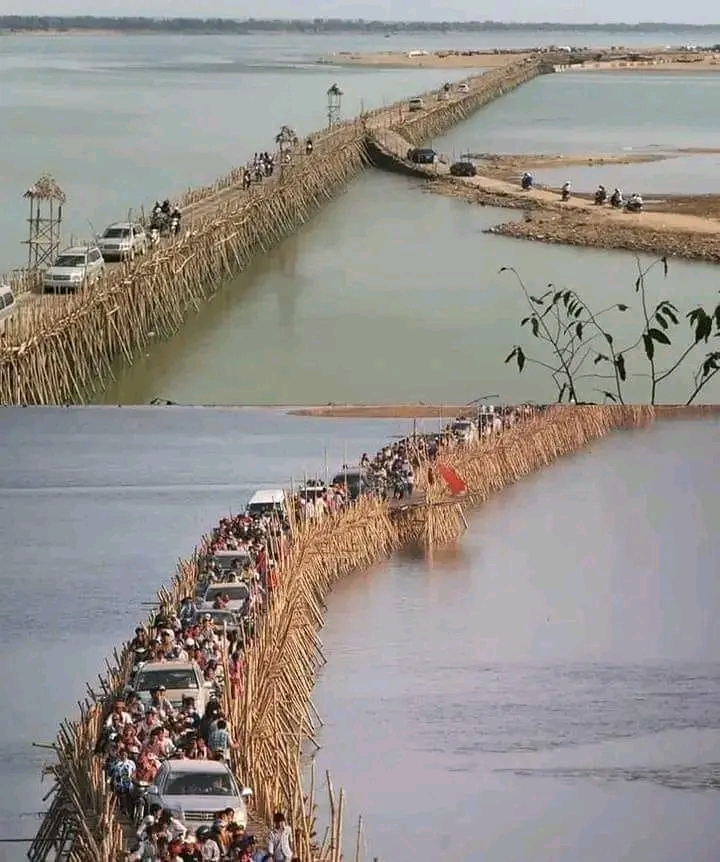The Bamboo Bridge in Cambodia exemplifies traditional engineering and community resilience, showcasing the ingenuity of local craftsmanship. Constructed entirely from bamboo, this remarkable structure requires no metal or concrete, relying instead on the natural flexibility and strength of the bamboo to support its weight.
It is designed to accommodate both vehicles and pedestrians, making it a vital transportation link for the surrounding communities.
Spanning the Mekong River, the bridge connects Skuon to other regions, facilitating daily commutes for hundreds of people. Its design reflects a deep understanding of the local environment, as it is dismantled and rebuilt each year to withstand seasonal floodwaters. This practice not only ensures the bridge’s longevity but also highlights the community’s adaptability to the challenges posed by nature.
The annual rebuilding process fosters a sense of community, as local residents come together to construct the bridge using traditional methods passed down through generations.
This collaboration is a testament to the resourcefulness of the people, who utilize locally sourced materials to create a functional infrastructure that meets their needs.
Moreover, the Bamboo Bridge serves as a symbol of sustainability, demonstrating how traditional knowledge can inform modern practices. By employing eco-friendly materials and techniques, the bridge minimizes environmental impact while providing essential connectivity for the community.
The Bamboo Bridge stands as a remarkable example of how cultural heritage and practical engineering can converge to create sustainable solutions. It not only serves as a crucial transportation link but also embodies the resilience and creativity of the Cambodian people, reminding us of the importance of preserving traditional skills in the face of modern challenges.

